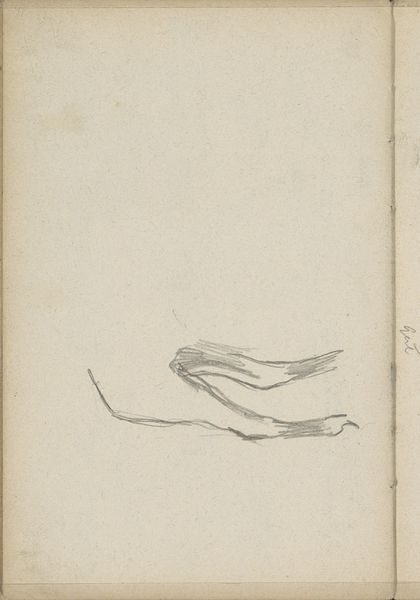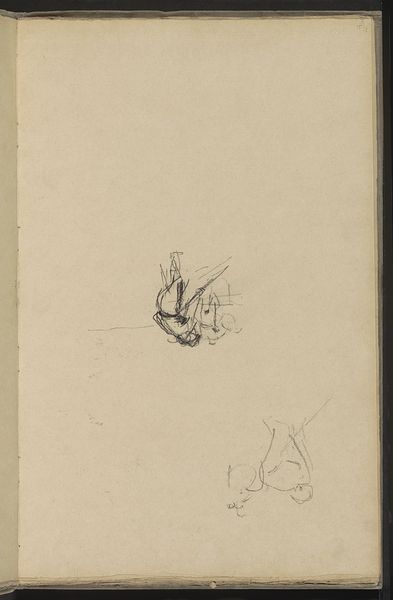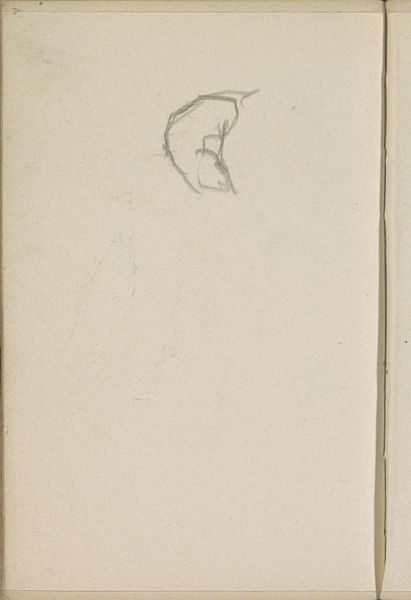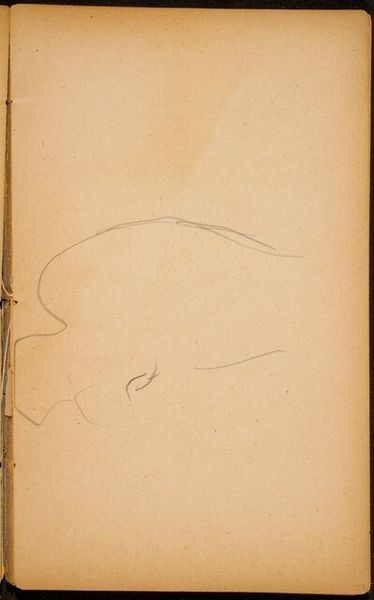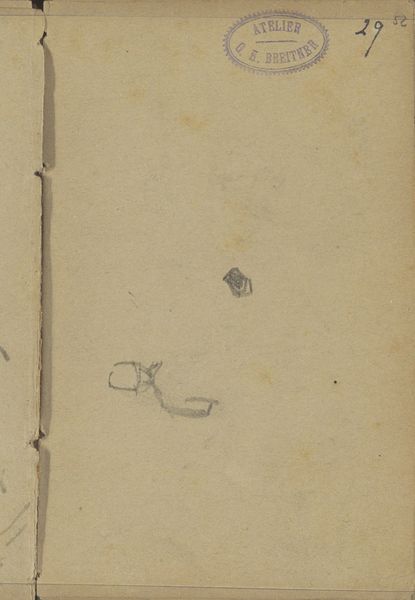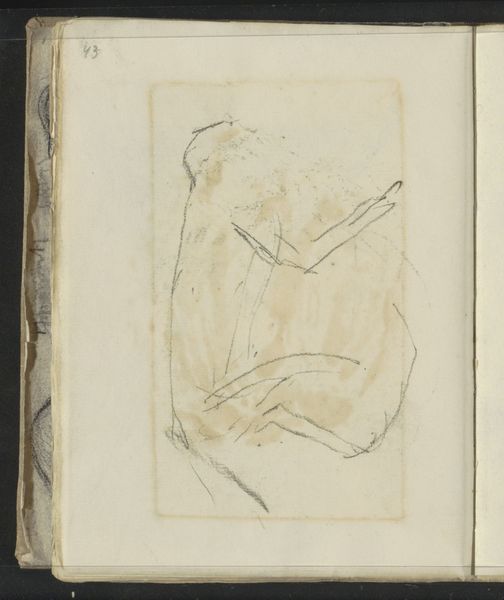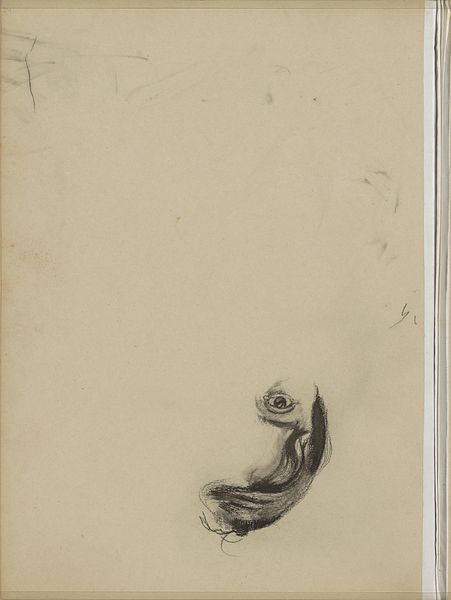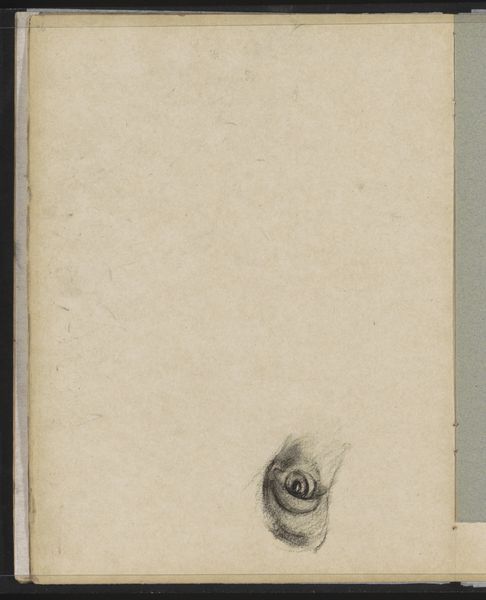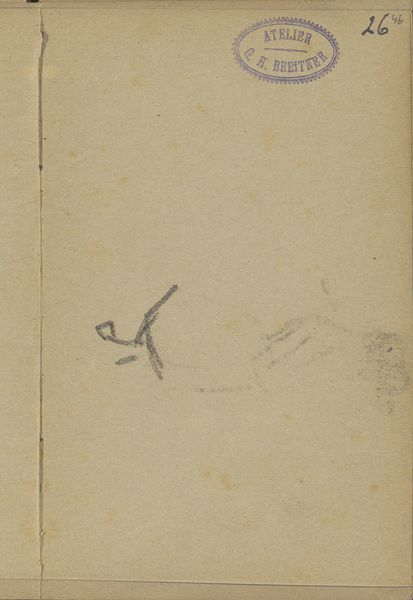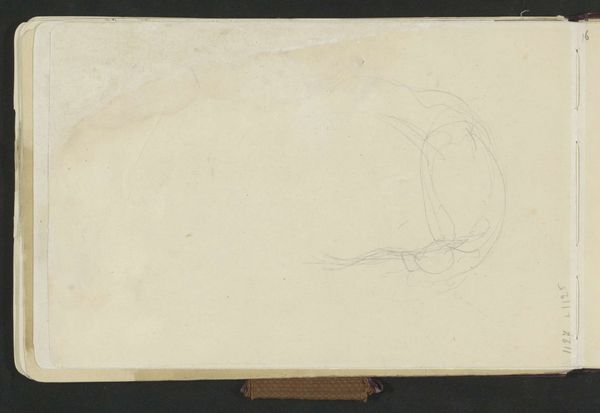
drawing, paper, pencil
#
drawing
#
impressionism
#
landscape
#
paper
#
pencil
#
line
#
realism
Copyright: Rijks Museum: Open Domain
Curator: This pencil drawing on paper, titled "Landschap," or "Landscape," was created by Willem Witsen around 1887-1888. It's part of the Rijksmuseum collection. Editor: There’s a distinct melancholy to this piece, isn’t there? Sparse lines on faded paper... It feels very transient. Curator: Witsen was certainly attuned to the subtleties of the Dutch landscape, part of a wave of artists invested in impressionistic techniques for realism. Remember the broader context here: landscape art was heavily tied to burgeoning Dutch national identity and the pride taken in its land after a period of industrial changes. Editor: I see it too in the drawing’s intimate scale—almost as though he captured it privately. What’s also really striking is how empty the paper seems. Curator: Yes, there’s a sense of deliberate reduction. Witsen belonged to a group called the Amsterdam Impressionists, and they were quite invested in depicting atmospheric conditions, daily life and were highly influenced by movements occurring within literary circles as well as artistic ones. It was displayed prominently in various shows highlighting that perspective. Editor: Given this context, can we think of the sketch as a socio-political intervention? The stark rendering of negative space in Dutch landscape paintings seems like a conscious break from a purely nationalistic representation and toward ideas concerning national existentialism. Curator: To be fair, these impressionist leanings also allowed the market and the bourgeoisie that participated in its production to gain favor towards works like this, it was quite popular as decoration or collection piece in some spaces. It walks that thin line quite often. Editor: It seems he really distills the essence of place, rather than just its picturesque surface, and as it hangs here within the Rijksmuseum. I imagine each viewing shifts depending on the sociopolitical conditions of those who witness it and it generates new perspectives. Curator: Indeed, even its sparse appearance can evoke reflection. I, too, think about it differently, knowing a little more of our discussions.
Comments
No comments
Be the first to comment and join the conversation on the ultimate creative platform.
